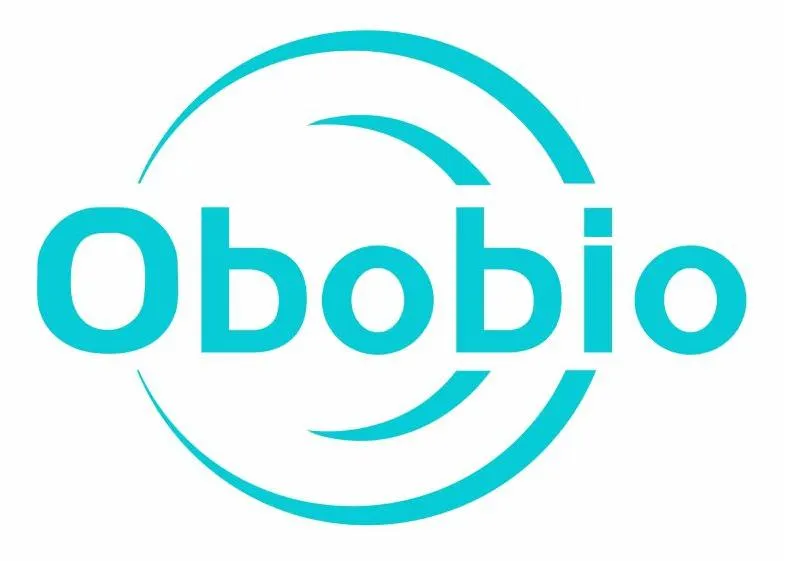Table of Contents
Introduction
Understanding the Central Role of Cell Culture Flasks in Modern Bioscience
In cellular biology and biotechnology, precision tools are indispensable. Among them, the cell culture flask is foundational, enabling scientists to propagate, observe, and manipulate cells in vitro. These flasks are more than passive containers; they are engineered environments that support the physiological demands of cellular life.
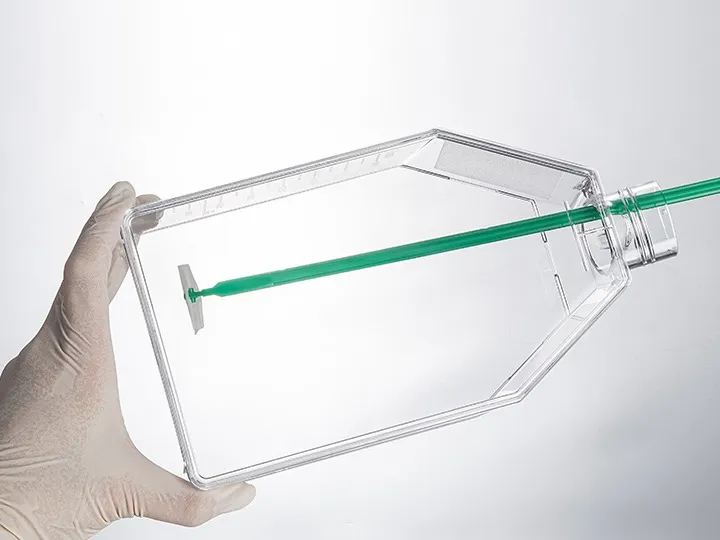
Why the Right Flask Design Impacts Research Reproducibility and Efficiency
A well-designed flask ensures uniform cell distribution, optimal gas exchange, and minimal contamination. These parameters, though subtle, are pivotal in maintaining reproducibility across experimental batches, particularly in high-throughput screening and pharmaceutical validation.
Table of Contents
What is a Cell Culture Flask?
Definition and Core Functions in Cell-Based Assays
A cell culture flask is a sterile, enclosed vessel used to grow and maintain cells under controlled conditions. It typically incorporates a growth surface, a secure cap for gas exchange, and markings for volume assessment.
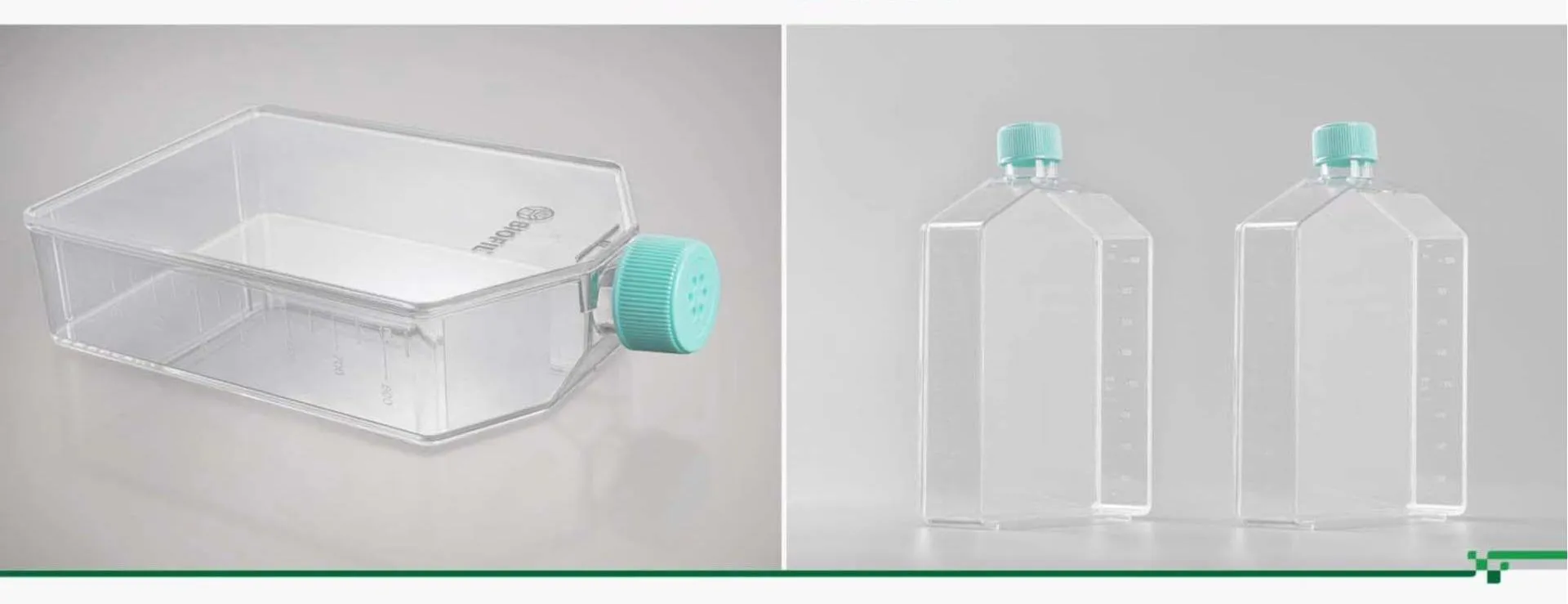
Historical Development of Cell Culture Vessels
Initially adapted from simple glass containers, culture flasks have evolved in tandem with cell biology. Innovations in plastic molding and surface treatment now allow for precise cellular manipulation in sterile, reproducible conditions.
Types of Cell Culture Flasks
T-Flasks: Standard Workhorse for Adherent Cultures
T-flasks, with their flat growth surface and angled neck, are ideal for adherent cell lines. Their widespread use in academic and industrial labs underscores their reliability.
Erlenmeyer Flasks: Ideal for Suspension and Shaker Cultures
Designed for agitation, Erlenmeyer flasks accommodate suspension cultures, such as hybridomas or HEK293 cells, often used in recombinant protein production.
Vent-Cap Flasks: Ensuring Gas Exchange in Sealed Environments
These flasks feature caps embedded with hydrophobic membranes that allow CO2 exchange while maintaining a sterile barrier against contaminants.
Angled-Neck Flasks: Improving Pipette Accessibility and Ergonomics
Optimized for ergonomic pipetting and minimal disruption to the cell layer, angled-neck flasks improve user experience and workflow efficiency.
Multi-Layer Flasks: Scaling Up Production Without Increasing Footprint
To address scalability, multi-layer flasks offer expanded surface area for high-density culture within a compact space, making them ideal for vaccine and biologic production.
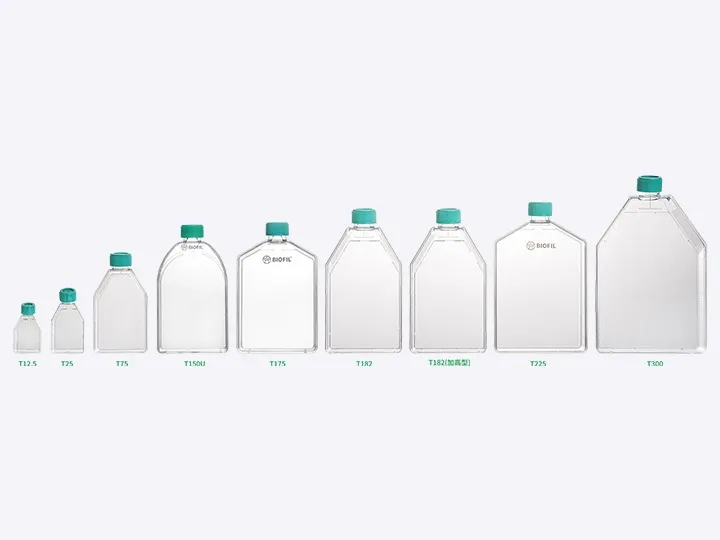
Surface Treatments and Coatings
Tissue Culture Treated Surfaces for Enhanced Cell Adhesion
These surfaces undergo chemical or plasma treatments to increase hydrophilicity, enhancing cellular attachment and proliferation.
Poly-L-Lysine and Collagen Coatings for Sensitive Cell Lines
Specialized coatings mimic extracellular matrix components, supporting the adhesion of primary cells and sensitive cell types that otherwise fail to anchor.
Ultra-Low Attachment Surfaces for Spheroids and 3D Cultures
For 3D culture and spheroid formation, surfaces are engineered to minimize protein adsorption and cellular adherence.
Hydrophobic vs. Hydrophilic Surface Modifications
Surface chemistry influences cellular morphology and function. Hydrophilic surfaces promote adherence, while hydrophobic ones deter it, affecting experimental design.
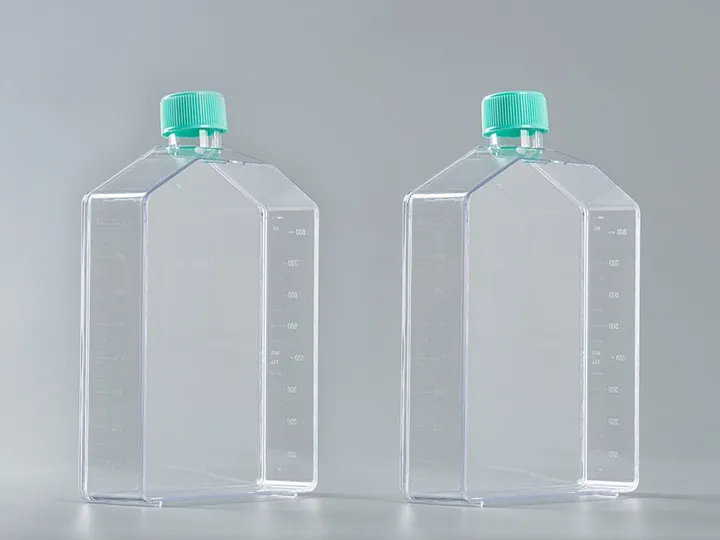
Materials and Manufacturing
Polystyrene vs. Polycarbonate: Pros and Cons in Laboratory Contexts
Polystyrene is cost-effective and optically clear, while polycarbonate offers impact resistance. The choice depends on mechanical demands and optical requirements.
Sterility Assurance through Gamma Irradiation and Cleanroom Production
Manufacturing occurs in ISO-certified cleanrooms, with final sterilization via gamma irradiation or ethylene oxide, ensuring aseptic integrity.
Recyclability and Environmental Impact of Common Materials
Material selection also reflects environmental accountability. New formulations promote recyclability without compromising biocompatibility.

Flask Design Features That Matter
Neck Geometry: Straight vs. Angled for Pipetting and Handling
Straight necks allow robotic access, while angled necks favor manual manipulation. The application dictates the optimal configuration.
Ventilation Options: Filter Caps vs. Plug Seals
Filter caps support aerobic growth, while plug seals offer tight closure for anaerobic or transport scenarios.
Graduated Markings and Optical Clarity for Monitoring
Accurate volume markings and clear walls are essential for media measurement and microscopic inspection.
Anti-Drip Lips and Leak-Proof Cap Designs
Innovative lip structures and gasketed caps reduce spill risk and improve handling during aseptic operations.
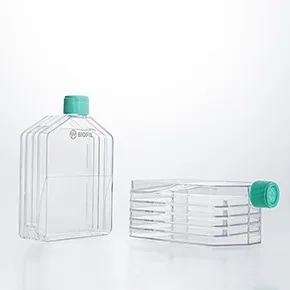
Choosing the Right Flask for Your Application
Adherent vs. Suspension Cell Culture Needs
Culture type determines flask choice. Adherent cells require surface-treated flasks, while suspension cells thrive in stirred vessels.
Small-Scale R&D vs. Large-Scale Bioproduction
Research labs benefit from single-layer, easy-access flasks. In contrast, industrial settings demand multi-layered vessels with high scalability.
Culture Duration, Media Volume, and Cell Type Compatibility
Growth kinetics, metabolic demands, and medium turnover influence the selection of flask type and dimensions.
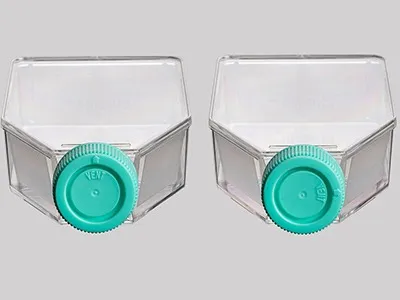
Sterility and Quality Control
Importance of Endotoxin-Free and DNase/RNase-Free Assurance
Contaminants like endotoxins or nucleases can compromise cellular integrity and downstream assays. Certified consumables mitigate such risks.
Lot-to-Lot Consistency for Experimental Uniformity
Consistent manufacturing ensures that flask performance remains stable across different batches, crucial for longitudinal studies.
Certifications: USP Class VI, ISO 13485, and CE Compliance
Regulatory certifications signal compliance with biocompatibility, medical safety, and international quality standards.
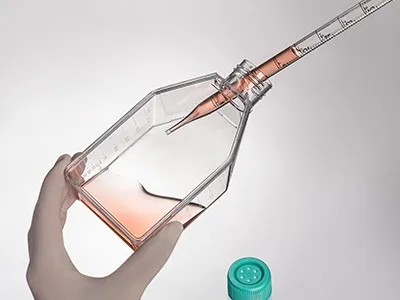
Handling and Usage Best Practices
Proper Flask Orientation in Incubators
Flasks should lie flat to ensure even nutrient distribution and gas exchange.
Media Addition and Removal Without Causing Shear Stress
Pipetting must be gentle and targeted to avoid detaching cells or damaging their morphology.
Avoiding Contamination During Routine Handling
Aseptic techniques—glove changes, alcohol sprays, and laminar flow use—are non-negotiable in cell culture hygiene.
Common Pitfalls and How to Avoid Them
Overcrowding Cells: Consequences for Proliferation and Morphology
Over-confluency leads to contact inhibition, altered gene expression, and inconsistent assay results.
Improper Flask Sealing and Evaporation Loss
Loose caps can cause medium evaporation, shifting osmolality and affecting cell viability.
Misuse of Non-Treated Surfaces for Adhesive Cell Lines
Using untreated flasks for adherent cultures leads to poor attachment and reduced viability.
Storage and Shelf Life
Shelf-Life of Sterile Flasks in Controlled Conditions
Flasks have defined expiry dates. Temperature- and humidity-controlled storage extends usability.
Temperature, Light, and Humidity Considerations
Long-term exposure to UV light or humidity may compromise sterility or structural integrity.
Rotation Protocols in High-Throughput Labs
Implementing FIFO (first-in, first-out) strategies ensures timely use and waste minimization.
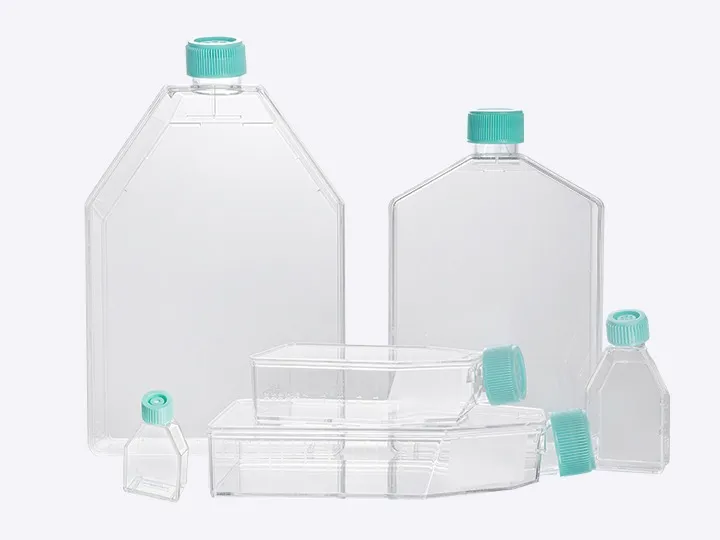
Applications in Scientific Research
Cancer Cell Culture for Drug Screening
Cell culture flasks facilitate high-throughput cytotoxicity and pharmacokinetics studies for oncology.
Stem Cell Expansion and Differentiation Studies
Stem cell protocols demand flasks that support delicate balance between self-renewal and lineage-specific differentiation.
Protein Production and Recombinant Cell Lines
CHO and HEK293 cells cultured in flasks are the foundation of biopharmaceutical manufacturing.
Primary Cell Isolation from Tissue Samples
Freshly isolated cells require optimal substrate conditions to thrive ex vivo, often in treated flasks.
Cell Culture Flasks in Industrial Biotechnology
Upstream Bioprocessing in Pharmaceutical Manufacturing
Culture flasks are used to seed bioreactors, initiating the upstream cascade in vaccine and therapeutic production.
Vaccine Production Using Cell-Based Platforms
Vero, MDCK, and other lines require flask expansion before viral infection and antigen harvest.
Scaling Up Monoclonal Antibody Production
Hybridoma cells in multi-layer flasks enable early-stage antibody generation for therapeutic validation.
Innovations and Technological Advancements
Pre-Coated and Pre-Filled Flask Systems
Ready-to-use systems streamline workflow and eliminate preparation variability.
Sensor-Integrated Flasks for Real-Time Monitoring
Embedded sensors track pH, temperature, and dissolved oxygen, providing actionable data.
Automated Flask Handling in Robotic Workflows
Automation-compatible flasks support high-throughput screening and reduce manual error.
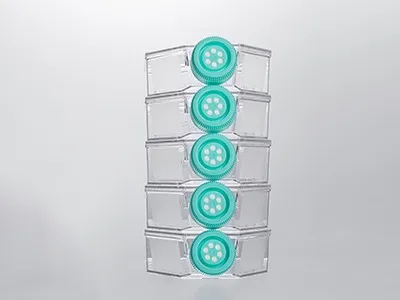
Sustainability and Eco-Conscious Options
Reusable Flasks: When and How to Sterilize for Reuse
With proper autoclaving and integrity checks, glass or polymer flasks can be reused sustainably.
Biodegradable Alternatives and Material Innovations
PLA-based polymers and recyclable plastics reduce environmental footprint without compromising function.
Closed-System Flask Designs to Reduce Contamination and Waste
These systems minimize open handling, ideal for clinical-grade and GMP applications.
Comparison with Other Cell Culture Vessels
When to Use Flasks Over Petri Dishes or Well Plates
Flasks provide enclosed environments with larger surface areas—crucial for expansion rather than screening.
Spinner Flasks vs. Static Flasks for Suspension Cultures
Spinner flasks allow agitation and oxygenation, enhancing suspension cell proliferation.
Bag Culture Systems as Scalable Alternatives
Though flasks are reliable, bioreactor bags offer scalable, closed systems for industrial volume.
rocurement and Supplier Selection
Evaluating Flask Suppliers for Quality and Reliability
Criteria include sterility certifications, technical support, and supply chain resilience.
Bulk Orders, Private Label Options, and OEM Availability
Custom branding and volume discounts are critical for contract manufacturers and institutional labs.
Red Flags in Procurement: Inconsistent Sterility and Dimensional Variance
Inconsistencies compromise experimental integrity. Supplier audits and lot testing are essential.
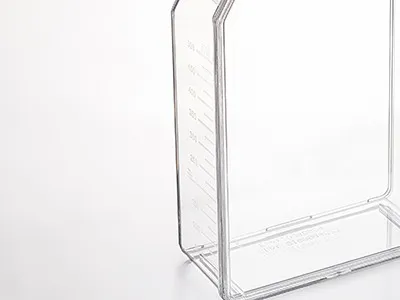
Training and Standard Operating Procedures
Educating Lab Personnel on Flask Handling and Disposal
Standardized training reduces contamination events and improves operational efficiency.
Documentation Protocols for Regulatory Compliance
Proper labeling, batch records, and traceability support audits and certifications.
Checklists for Daily Flask Inspection and Maintenance
Routine checks detect leaks, warping, or expiry, safeguarding experimental outcomes.
Case Studies and Performance Data
Comparative Growth Rates Across Flask Types
Studies show surface treatment and gas exchange mechanisms directly influence growth kinetics.
Improved Yield and Viability in Filter-Capped Flask Systems
Enhanced ventilation correlates with reduced hypoxia and increased culture longevity.
Real-World Insights from Academic and Biotech Labs
Testimonials confirm that flask choice affects reproducibility, viability, and cost efficiency.
Regulatory Considerations
GLP, GMP, and ISO Requirements for Flask Usage
Compliance ensures that materials and processes meet clinical, research, and manufacturing standards.
Labeling, Batch Tracking, and Quality Documentation
Transparent documentation supports recalls, reproducibility, and accountability.
International Shipping and Storage Compliance
Temperature monitoring and customs compliance ensure safe global distribution.
Conclusion
The Unsung Role of Cell Culture Flasks in Scientific Discovery
Though modest in form, cell culture flasks are foundational to every biomedical breakthrough.
Future Directions: Smarter, Greener, and More Adaptive Flask Solutions
Innovation will drive the next generation of flasks—responsive, sustainable, and engineered for evolving biosciences.
